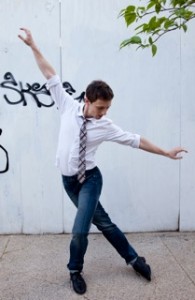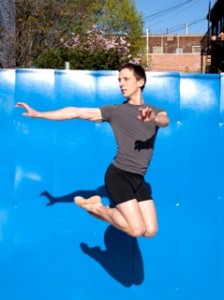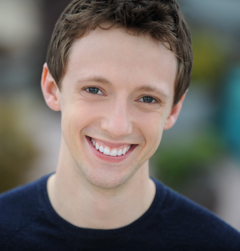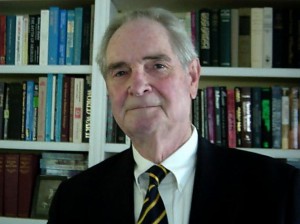Today we have another interview with a member of the company at the Joffrey Ballet. Derrick Agnoletti is with us to talk about his career…

1. How did you become involved with dance?
I was a water polo player and swimmer growing up. I don’t think dancing had ever crossed my mind. At the advice of a coach, I tried a class to improve my coordination. It was like nothing I had ever experienced. I loved the music and the body moving together. I remember specifically seeing the dancers doing ronde jambe at the barre and thinking it was so beautiful and opulent. It was from here (San Jose Cleveland Ballet School) I began my training and further moved on to San Francisco Ballet School and School of American Ballet to name a few.
2. What are you currently doing in the field?
I am currently employed at The Joffrey Ballet as a dancer since 2003 (almost 10 years!!!). I also teach at the Joffrey Academy of Dance and choreograph for the Joffrey Academy as well as many outreach programs through out the Chicagoland area. I love choreographing on students who have never danced. Several of those works have opened The Joffrey Ballet gala as well as the Chicago Dancing Festival. Giving these students the chance to share the stage with companies like Joffrey, New York City Ballet, the Royal Ballet and American Ballet Theater.
3. Would you share a special moment from your career with readers?
I have so many favorite moments, and so many stick out so I will chose a few. I remember sitting in a chair after Mark Goldweber walked me from my audition class to Mr. Arpino’s office, and I had to sit there and wait for him to finish reading something, and then finally Mr. A (as we called him) said I looked like a Joffrey Ballet dancer and asked if I was Italian. Then immediately they offered me a job. It was surreal. I also remember very vividly my first principal role as Mercutio in Crankos, Romeo and Juliet. I enjoyed throwing myself into a “Derrick like” Mercutio. I loved fine tuning every moment to have inner dialogue and understanding what my relationship was to the rest of the cast. It was such a great experience. I carry those things with me in everything that I do.
4. What is the best advice you have received from a teacher or mentor? [Read more…]














